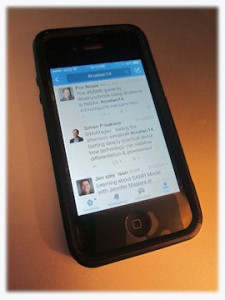 You have a good idea. You clearly see what your organization could gain from its implementation. You feel that the benefits are so obvious that acceptance should be a simple formality. Yet when the time comes for you to formally share your idea, you find it is met with resistance, loses momentum, and fails to move forward.
You have a good idea. You clearly see what your organization could gain from its implementation. You feel that the benefits are so obvious that acceptance should be a simple formality. Yet when the time comes for you to formally share your idea, you find it is met with resistance, loses momentum, and fails to move forward.
We often encounter initiatives that do not have the legs to move beyond the conceptual stage. This does not necessarily occur because the initiative did not merit consideration; it may simply be a result of poor promotion and failure to understand how to best navigate the political landscape.
The word politics is derived from the Greek word for citizens, and has to do with matters related to decision making. Understanding the politics of an organization means understanding just how decisions are made.
We work in complex systems. A degree of political savvy is required in order to successfully navigate the road one must travel in bringing an initiative forward. Having a keen sense of internal politics and organizational culture enables one’s ability to exercise influence and promote a particular agenda.
On the surface, it may appear that some ideas immediately establish traction and gain support. A deeper analysis will reveal that it is rarely that simple. Invariably, steps have been taken to do groundwork resulting in an environment in which the idea can flourish. Establishing support for an initiative typically involves the following:
- Building Alliances
Organizations are driven by relationships. How we interact with others sets the tone for when we, in turn, look to others for support. That reality should come as no surprise, yet it is not uncommon for there to be a disconnect between what is put into a relationship vs what one expects to get out of it.
Building good will, establishing an emotional bank account, creating connections; these euphemisms all speak to the same thing; maintaining a balance between what we ask of and what we offer to our colleagues.
- Anticipating Obstacles
The worst thing one can do in bringing a new idea forward is to be blind to the potential obstacles to making it a reality. Not everyone will share enthusiasm for a new idea. If it threatens established practice or requires new learning, anticipate encountering an element of resistance. Do not underestimate the possibility that obstacles may be less related to the idea and more related to the people behind them. Failure to build alliances will minimize the likelihood of success in bringing an innovation forward.
A good innovator will recognize potential obstacles and plan accordingly.
- Combating Resistance
Perhaps combat is too strong of a word, but that is the reality that the innovator faces in the absence of thoughtful advance planning. Consider the source of resistance. What pre-emptive moves could potentially lessen or eliminate opposition to the new idea? Often, the road can be paved simply by doing a “soft sell” in advance. This involves working the grass roots, sharing information and responding to concerns at the individual level. A benefit of this approach is that one encounters resistance in advance and is provided an opportunity to either modify the proposal or develop sound counter arguments prior to putting the idea forward at a more formal level.
- Showing Grit
The term “grit” has evolved to include a somewhat nebulous definition that encompasses elements of persistence, resilience, will, and a host of other characteristics that have at their root the notion of seeing something through to completion under even the most difficult of circumstances. Anticipate the need to rely upon these qualities when bringing forward a new idea. This is critical to building momentum and gaining acceptance.
Countless “good ideas” have died on the meeting table for lack of preparation. Just as seeds grow best in fertile ground, so will innovations only take root when preliminary groundwork has been thoughtfully carried out. Understanding the politics of the organization is key to being able to do this to greatest effect.









